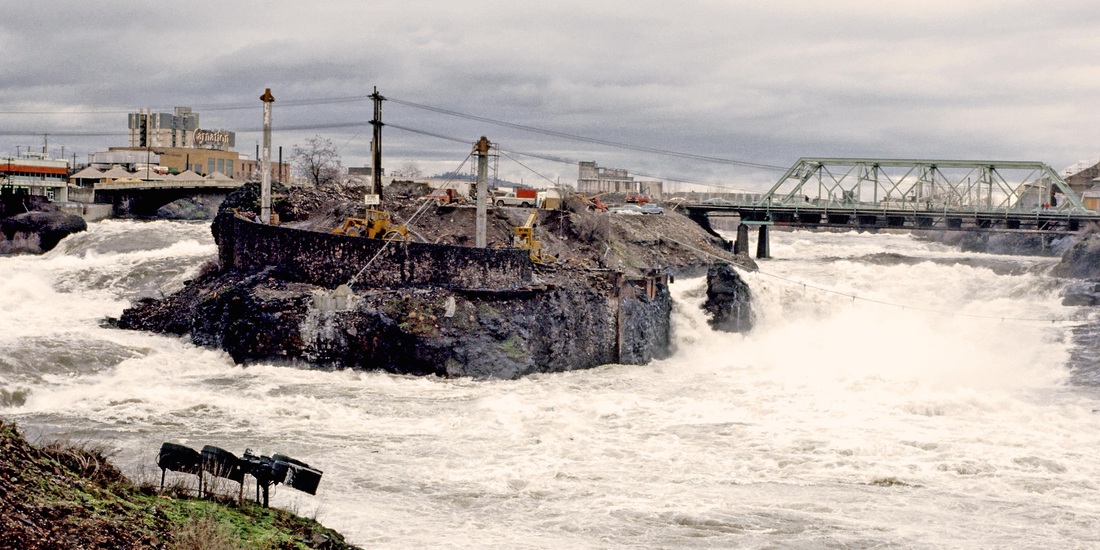|
J. William T. "Bill" Youngs, The Fair and the Falls: Spokane’s Expo ’74: Transforming an American Environment, Chapter Fourteen
|
"Expo '74 Concept Art" courtesy of the Washington State Archives
|
Chapter Fourteen: Building the Fair
|
SummaryAlthough today the Spokane riverfront seems to be the obvious choice for the Expo site, in the early 1970s this choice was by no means a foregone conclusion. But the downtown riverfront was finally selected as the location for the fairgrounds, and in 1972 destruction of the train depots, trestles, and other industrial buildings began. The construction process involved not only the creation of pavilions, but the actual recontouring of the land around the river as well. This chapter concludes with sections on the construction of the opera house and Ford Pavilion, which serve as examples for the construction process as a whole.
|
Author reads from the Text
"Nondescript debris"
In November 1972, Jack Roberts, a reporter for the Spokesman-Review described the site: "Havermale Island's sinking skyline, slammed for weeks by wrecking balls, is taking on the tired, desolate look of a bomb-gutted section of World War II London. The island, which is the heart of the 100-acre Expo site, is a mass of twisted structural steel, broken chunks of concrete, railroad gondola cars being loaded with salvage, huge cranes poking skyward and piles of nondescript debris."
"Those damn tracks"
"Many years later, King Cole described his 'defining moment' during the construction. One day he drove down Grand Boulevard from Spokane's South Hill and curved around Sacred Heart Hospital to Washington Street. 'There had always been these railroad tracks cutting me off from the view of the north side of town and of the river and everything else. The day that I actually drove down, and they weren't there, I felt like: if nothing happens, if the fair didn't happen, if I died, whatever happened, what I really wanted to do the most of all was to get rid of those damn tracks.'"
"They went to the trough too"
"About a decade later, when he became involved with Expo '74, Williams was willing to accept a broader definition of government's proper role in society. Like many other Spokane businessmen, he was comfortable with the blend of private and public enterprise that made the world's fair possible, and he would help the exposition acquire several millions in state funds. As he said of Expo, 'It was private enterprise, but they went to the trough too.'"
"Something unique for Spokane"
"Although a seasoned architect, Bruce Walker still considered the opera house project daunting. He wanted to create something unique for Spokane: 'We couldn't go out there and duplicate something from some other city.' He realized that he was creating a showplace for thousands of performers he would never meet: 'It's like designing a kitchen for a cook you don't know. Your neck is out there 50,000 miles. You design it, and he turns out to be left-handed, you know? What are you going to do? Tear the whole thing out and redo it?!'"

